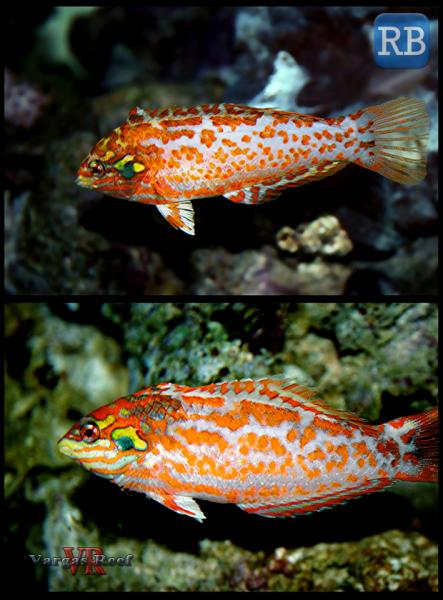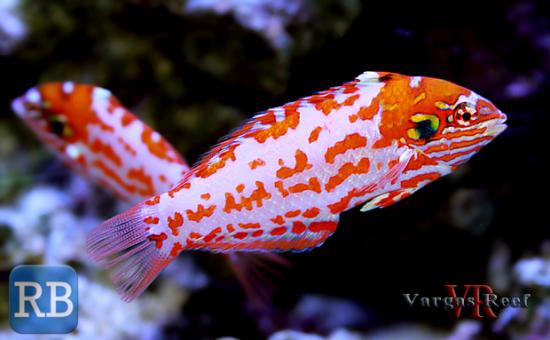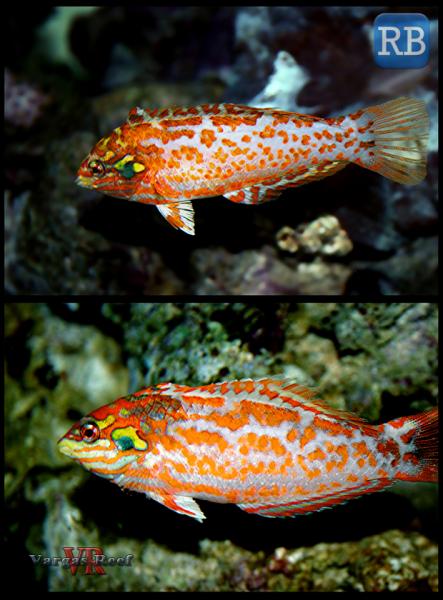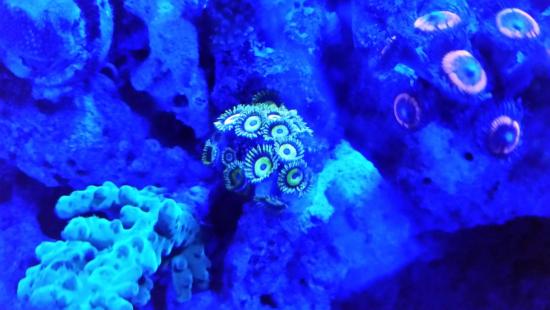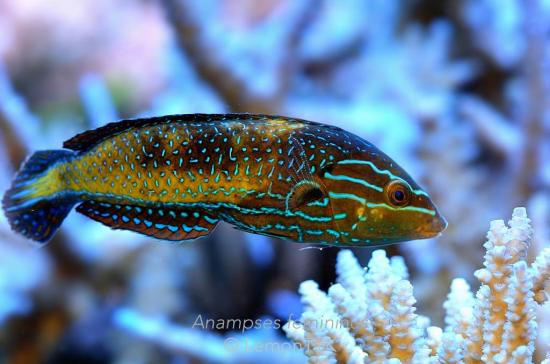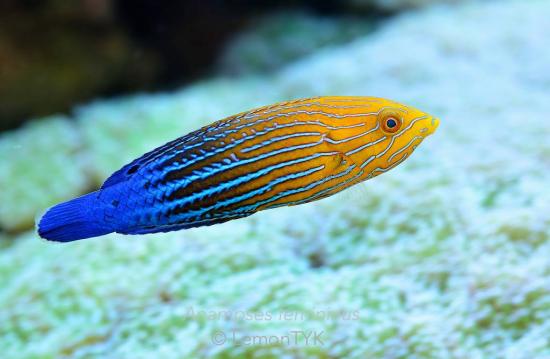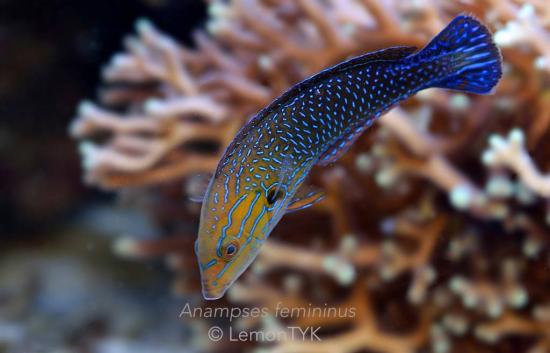-
Posts
8,459 -
Joined
-
Last visited
-
Days Won
5
Content Type
Profiles
Forums
Gallery
Everything posted by ReDDeviLs
-
Fish of the week! Choati Leopard-wrasse, Australian Leopard-wrasse Class: Actinopterygii Order: Perciformes Family: Labridae Genus: Macropharyngodon Species: choati, Randall, John E. 1978 M. choati is commonly referred to as the Australian Leopard-wrasse. As the name implies this fish is exported from Australia. They frequently inhabit coastal to inner reefs, lagoons or sheltered reefs, where there’s a presents of algae growth and slopes of deep rubble drop-offs where sand is present. Its distribution is fairly wide and can be located from the northern Great Barrier Reef, Queensland south to the central coast of New South Wales. They can be found at depths of less than one meter to over 27 meters (3 to 91 feet). Most leopard-wrasses are sexually dimorphic creatures but this species is not like the rest in its genus. The coloration of the juveniles and the females are similar, with nearly transparent or colored blotched fins and terminal males can be distinguished from the females by the color arrangement on the anal fin. The captive environment best suited for Leopard wrasses are mature, well established reef aquariums and are not suited for Marine fish only aquariums. They require an environment that emulates their natural habitat best and allows them to graze for macro and micro invertebrate fauna naturally. A bare bottom reef aquarium is not a suitable environment for these fish — simply put they are diurnal (opposite of nocturnal) creatures that seek refuge in the sand come night fall. A sandy bottom is essential for the health and long term success. Juvenile Female Male Read more: http://reefbuilders.com/2013/02/02/australian-leopardwrasse-quarantine-technique/#ixzz3gm8C8eVD Abstract from Reefbuilder Credit to Tony Vargas.
- 9 replies
-
- Macropharyngodon choati
- choati wrasse
-
(and 1 more)
Tagged with:
-
its worth it bro! you never regreting getting a box. so much fun! upz for u!
-
the acan caught my eye
-
good news Feminus wrasse this week available in CF.
-
From your box ah bro? So lucky!!!
-

WTB : Photosynthetic gorgonian!
ReDDeviLs replied to Evolutionz's topic in Sell off/Pasar Malam Shop
bro i have, suppose to be purple but not enough light now is brown. free -
All rsved. duncan sold. Ty
-
Your photo doesnt do justice bro. U not showing its beautiful finnage
-
The male should be of same varient just different lighting/angle of photo. this fish do appear in CF shipment once awhile.
-
if you notice, reef resh instruction recommands to slowly increase dosage etc, i believe if you want to stop..got to have a replacement method or system or else the system wouldnt handle properly.
-

Weekly update 20th to 26th July 2015
ReDDeviLs replied to thomas_lim's topic in Weekly LFS Stocks Report / LFS Info Centre
looking for garden eels, seahare, emerald crab! -

WTS : 2.5x2x2 cabinet with sump back overflow
ReDDeviLs replied to foo_pat's topic in Sell off/Pasar Malam Shop
photos bro? -

OMG! Look at these hybrids and rare fishes!
ReDDeviLs replied to Digiman's topic in FOWLR (Fish-only with Live-rock)
cant wait to get my hands on a lennardi! -

conversion of lps tank to sps
ReDDeviLs replied to SSC's topic in SPS and Advanced Reefkeepers Forum
i would first test the parameters for my current tank. then access the type of equipments i have, would they be sufficient or workable for an sps tank. tackle the basic issues if there is any, and then start the new journey! -
1) Aqua cultured duncan coral, grow from 1 head. now have more than 12heads. $80 2) la lakers zoas - over 20++ polyps $60 3) lumi green GSP - on a 1.5inch diameter frag plug. its a full green GSP $15 collection around bouna vista.
-
Anampses Feminus Hailing from the deep tropical waters of Vanuatu and Eastern Australia, Anampses feminus is one of the rare wrasses where the female can easily rival the male in vibrant colouration - in fact, some hobbyists may even prefer the female colouration over the male. Originally a very rare fish, we have started to see it appear slightly more often in Australian imports. However, it is still by no measure a common fish and we'd be lucky to see a few specimens arrive in just a couple of shipments per year here in Singapore. As with many wrasses, this wrasse from the Tamarin wrasse family does not usually travel well and requires a lengthy acclimation period to recover. During this period, it is best to provide this fish with a deep enough sand bed (or at least a sizable box with sand in it) for the fish to hide and get itself comfortable. Interesting fact: When importing this species into different timezones, it has been observed that they do experience "jet lag" and keep bedtime hours similar to Australian timezones! They either need a relatively lengthy period of a few months to slowly adjust their body clock or, if you have a stable specimen you can try to confuse it by keeping your lights on 24/7 for a few days then maintain your usual lighting schedule and hope it catches on! While not an easy fish to keep alive long term, success in meeting its needs will reward you with an absolute treasure in your reef tank! Female Feminus Wrasse Male Feminus Wrasse Male Feminus Wrasse Author: Illumnae photograph: LemonTYK
-
lol, alright, centrally west also considered lol.
- 13 replies
-
- jurong
- bukit timah
-
(and 7 more)
Tagged with:
-
Very nice ssc colony.
-
100% white still so strong coloration. usually people use less white more blue. Support 208
-
because some people will feeel that if you are not with them, you are against them. and when you want to be with them you got to follow them, and not everybody can afford it. that is how some people got no choice but to decom after. if everyone could respect each other, then we could grow the hobby together.
-
trying to plan some activity for west siders to trial first. anyone keen to join in and also put in some suggestions? 1) ReDDeviLs - Bouna Vista
- 13 replies
-
- jurong
- bukit timah
-
(and 7 more)
Tagged with:
-
going with the XR15 maybe a better choice if spread is a concern. the 120Degree lens do reduce par but users will be able to increase the intensity to compensate the par lost.
-
its good to use the acclimatizing mode, another way you can use cloud mode which i have been using. bare in mind the frequency and % on cloud mode does kick in pretty often which may result in corals having insufficient lighting also.


